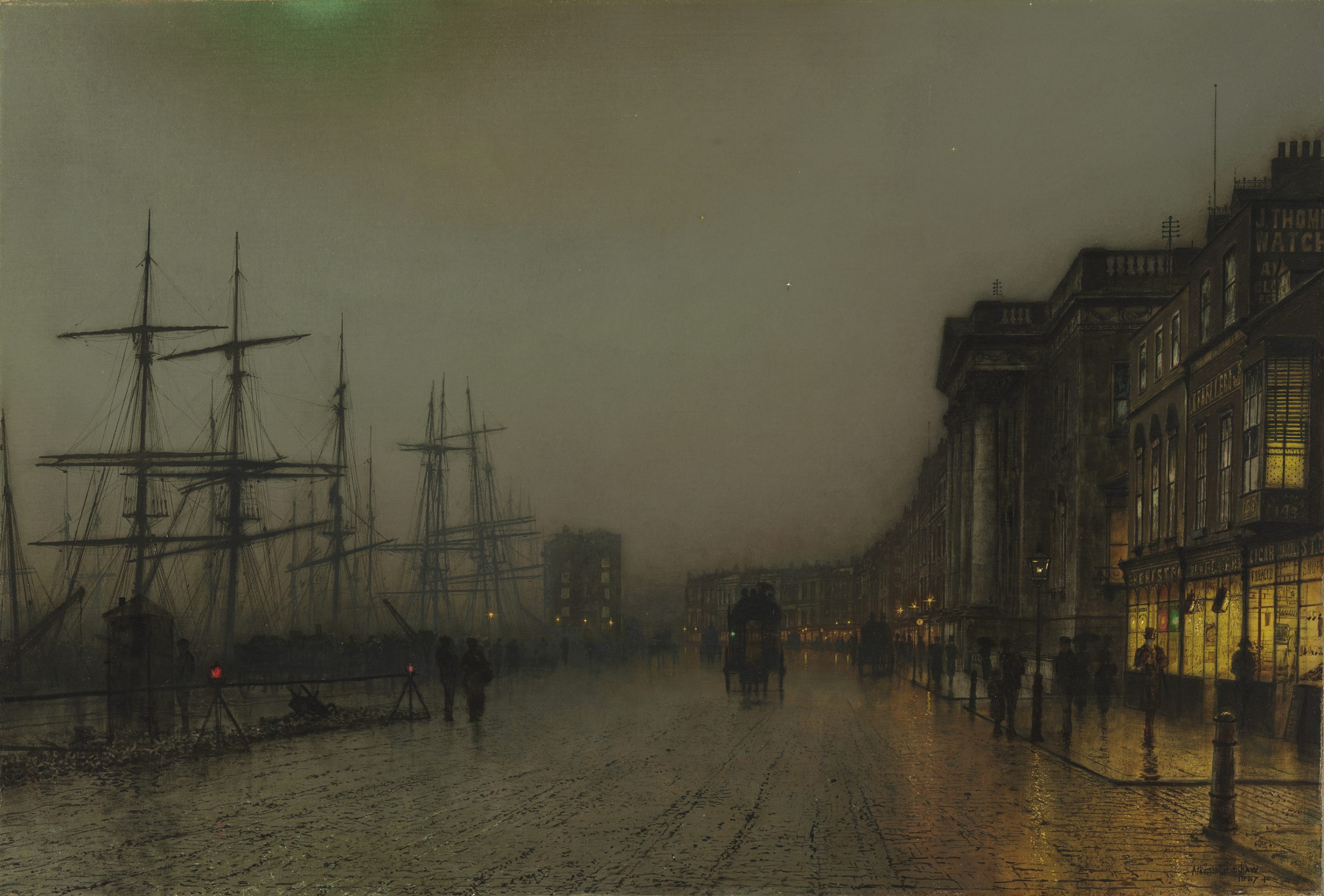The work of Grimshaw was mainly influenced by the Pre-Raphaelites. He began to paint landscapes, worked out to the smallest detail, with careful choice of lighting and color. Often he painted landscapes typical for a particular time of the year or for certain weather conditions. The views of the streets and suburbs are very typical for him, as well as the lunar landscapes of the docks in London, Leeds, Liverpool and Glasgow. He was able to successfully convey the effects of lighting, and often in this way the paintings convey the mood. The researchers noted that images of gas-lit streets and foggy embankments convey both the warmth and alienation of the cityscape.
Advertising:
In later works, he portrayed imaginary ancient Greek and Roman scenes, as well as characters in the works of Longfellow and Tennyson. Tennyson influenced him so strongly that Grimshaw gave all his children the names of characters in Tennyson’s poems.
During the 1880s, Grimshaw worked in his London studio in Chelsea, near Whistler’s. The latter, having familiarized himself with the work of Grimshaw, wrote that he had invented the nocturne in painting before Whistler himself. However, Grimshaw’s realistic, almost photorealistic landscapes differed significantly from Whistler’s symbolic nocturnes. It was noted that in his work the old tradition of rural lunar landscapes was transferred to the urban environment and captured the city’s rain and fog, creating the image of a Victorian city.
